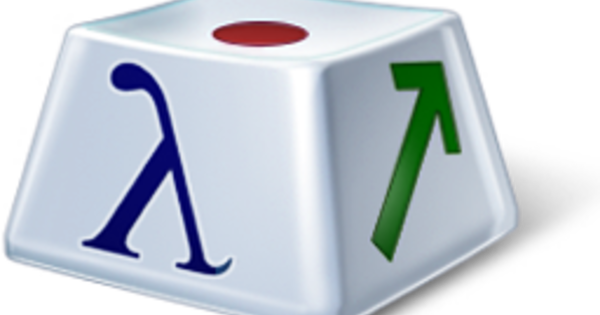To completely customize Windows 10, you sometimes have to dig deep to arrive at the right options. Ultimate Windows Tweaker 4.2.2 makes short work of the maze of settings, tabs and submenus. You can make adjustments from eight clear windows with just a few tabs. Because some tweaks are very in-depth, you need to know what you're doing.
Tip 01: Portable version
With every Windows update, Ultimate Windows Tweaker has been expanded and renewed. In the meantime, we are working on version 4.2.2., which contains more than 200 tweaks for the operating system. It is a small download that does not require installation, because the software is portable. You can therefore also use the program from a USB stick if you find that useful. Download the zip file, extract the archive file and open the program.
The operating system will warn that this software may change the operating settings. That is also the intention of this tweak software. Maybe even your antivirus protection will sound the alarm, but this is a false positive; false alarm. Rest assured that Ultimate Windows Tweaker does not contain any malware. The only danger you run is that you make changes yourself without knowledge of the facts. That's why the program creates a restore point when you open it, so you can roll back the tweaks.
Each category is a logical collection of checkboxes and slidersTip 02: System Information
When you open the program for the first time, you get an overview of the system information. The tweaks are divided into eight categories. Don't experiment in a hurry and certainly don't make too many tweaks at once! Then you no longer know what exactly is the cause of an undesirable result.
In each category you will find a logical collection of checkboxes and sliders. At the bottom of the screen you see a line: "There's nothing to show right now (...)". When you immediately hover over the checkbox in one of the eight categories, you can read a short description of the tweak here.

Back to square one
Ultimate Windows Tweaker is only available in English and because of the many options, this tool is really intended for the advanced Windows user. Ultimate Windows Tweaker 2 is for Windows Vista and 7, Ultimate Windows Tweaker 3 is for Windows 8 and 8.1 and Ultimate Windows Tweaker 4 is for Windows 10. The Windows 10 version also emphasizes many privacy aspects. Fortunately, when you get stuck, there is the button Restore Defaults, which resets everything back to default settings.

Tip 03: Customization
We explain the most useful functions in this article. We start with the category Customization. When you click on this, you will see five tabs in the right part: Windows 10, Taskbar, File Explorer, Universal UI and This PC. In the Windows 10 tab, you can view the various options for shutting down the computer. This is also the place to disable the graphical animation of the start menu. This makes the menu less attractive, but it opens a bit faster. In the tab This PC determine which components in Windows Explorer are This computer should appear.

dark theme
By default, Windows 10's settings menus appear in white. However, the developers of Microsoft have also prepared a hidden theme called Hidden Dark Theme. As the name suggests, this changes the color of the menus to a very dark shade. To get this available you normally have to modify the registry through complicated settings. In Ultimate Windows Tweaker you open the category Customization where you are in the tab Windows 10 the option Enable Dark Theme and then restart the computer.

Tip 04: Taskbar
The tab task bar from the group Customization contains all the tweaks for the launch bar and system tray. If the start bar is too small or too large for your taste, you can adjust its size here. Or do you want to continuously change the size of the icons? In this way you also prune the number of elements that are in the system tray: do you want to remove the clock, the sound volume, the battery meter, the network icon from the system tray? That's all possible!
 Want to get rid of the clock, volume, or network icon from the system tray? Which can!
Want to get rid of the clock, volume, or network icon from the system tray? Which can! Tip 05: Windows Explorer
We'll stay in for a while Customization. In the tab File Explorer control the operation of Windows Explorer. Here you specify, for example, that the last opened folders must be open again when you restart the PC, with Restore Last OpenedFolders At Startup. Never use Aero Snap, the feature that resizes windows when you drag them to the edge of the screen? Or do you care about Aero Peek, the function that allows you to temporarily see through windows? Then check the options here Disable Aero Peek Feature and Disable AeroSnap Feature at.

Tip 06: Universal UI
The tab Universal UI you use to indicate how long the notifications remain on the screen. Here you also specify, for example, how long the slide show should be shown in the lock screen. By the way, with one check you disable the Lock screen so that you don't have to log in every time. That is obviously less secure, but if you are the only one working on this computer at home, it can be very useful. And with it Smart Screen-filter lets you check new apps from the Windows Store for malware.

Restore point
There are three important buttons in each tab and category. With the button Create Restore Point create a restore point. If necessary, you can always use the function System recovery revert to a saved restore point. The rightmost button Apply Tweaks ensures that any adjustments you've made are applied. For some procedures you do have to restart.

Tip 07: User Accounts
The User Accounts category consists of only one tab, which contains tweaks to adjust security via the welcome screen, the user account and the user account control. The option Disable Last Logon Information On Logon Screen prevents the welcome screen from showing which user account you were last logged in with. This makes it a bit more difficult for unauthorized persons to log in, because they also need to know the username in addition to the password. The option Require Users To Press CTRL+ALT+DEL To Logon requires the user to press these three keys before logging in.
In this tab you can also enter your own message that the user will now receive when logging in. The big blue button Enable Built-in Administrator Account switches to administrator mode. This may be necessary to change security settings, install software and hardware, and access all files on the computer. Administrators can also make changes to other user accounts. Use this account only for troubleshooting! If you use this account as the default account, you run the risk of accidentally making changes that harm the Windows installation. Fortunately, there is also a second button, Disable Built-in Adminstrator Account, so you can switch back to a regular account.
 This makes it a bit more difficult for unauthorized persons to log in
This makes it a bit more difficult for unauthorized persons to log in Tip 08: Performance
On to the category Performance, where we find the sliders and boxes for improving system performance. By making Windows less time waiting for tasks to complete or for shutting down processes that are not responding, you save on system resources. You control this with the sliders under the Performance Tweaks. Make sure that Restart Shell Automatically After Some Error on. As a result, after a crash, Windows will immediately rebuild the user environment. Pay attention to the option Auto-End Non Responsive ProgramsBecause if you allow programs that are not responding to close automatically, it can cause data loss.

Resource Check
Via the button Resource Monitor at the Performance Tweaks open the function Resource Check where you read how much memory is still available and how much memory each running program uses. In most cases, part of the RAM is also reserved for hardware.

